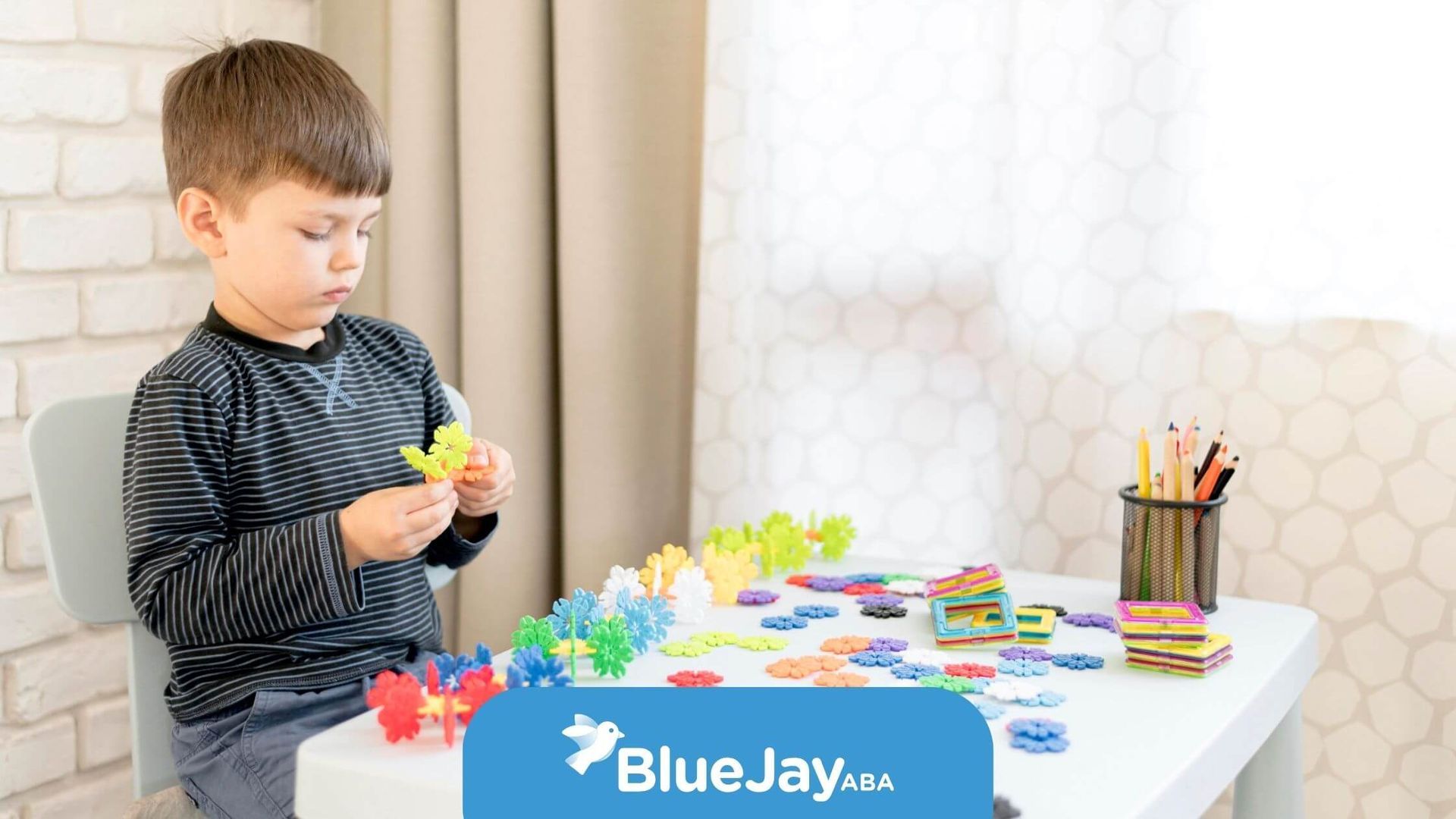The Power of Natural Environment Teaching in ABA Therapy
Understanding Natural Environment Teaching
Natural environment teaching in ABA therapy focuses on teaching skills in the contexts where they naturally occur. Therapists embed learning opportunities within everyday activities like snack time, dressing, and play. This strategy falls under the Applied Behavior Analysis framework and often yields strong gains in adaptive skills and communication. In this article, readers will gain a clear understanding of how natural environment teaching works, explore its core components and benefits, compare it with discrete trial teaching, and review practical implementation tips for families, educators, and professionals in North Carolina.
Definition And Origins
Natural environment teaching (NET) emerged from the broader field of behavior analysis in the 1970s. Researchers recognized that skills learned in structured settings did not always transfer to real life. By shifting instruction into the learner’s everyday routines, practitioners aimed to boost generalization and meaningful engagement. NET emphasizes the use of naturally occurring cues and responses rather than artificial prompts on a therapy table.
Role In ABA Therapy
Within ABA therapy, NET complements more structured methods like Discrete Trial Teaching (DTT). While DTT breaks skills into isolated trials, NET embeds instruction within activities the child already enjoys. Therapists observe the learner’s interests, then shape those moments into teachable events. This blend of structure and spontaneity helps children practice communication, social, and self-care skills in a setting that feels familiar and motivating.
Key Components Of NET
Child Motivation And Interests
NET hinges on the learner’s natural motivation. Therapists begin by identifying preferred toys, games, or snacks. They then create situations where the child must use a targeted skill to access that interest. For example, a therapist might place a favorite toy slightly out of reach, prompting the child to request assistance or label the item.
Embedded Learning Opportunities
Rather than structuring lessons around arbitrary materials, NET embeds instruction into daily routines. Snack time can become a lesson in turn-taking and requesting. Getting dressed offers practice in following multistep directions. Playdates serve as occasions to work on social greetings and conversation skills. These natural contexts encourage learners to apply skills spontaneously.
Prompting Strategies And Fading
To support initial success, therapists use prompts such as verbal cues, gestures, or light physical assistance. They carefully record which prompts worked and how often they were needed. Over successive trials, prompts fade systematically so the learner gains independence. This prompt-fading process balances support with the goal of self-initiated performance.
Benefits For Learners With ASD
Increased Skill Generalization
Skills taught in the natural environment often transfer more readily to other contexts. When a child practices requesting juice during snack time, they are more likely to request juice at home and school. NET reduces the “teaching-to-the-table” problem by training in multiple settings, making acquired abilities more functional and spontaneous.
Enhanced Engagement And Motivation
Because NET builds on the child’s interests and daily activities, it tends to feel less formal and more enjoyable. Learners show higher participation rates and longer attention spans when instruction connects directly to their preferences. This heightened engagement can accelerate progress and reduce resistance to therapy.
Family Involvement And Consistency
Families play a vital role in NET by reinforcing skills across environments. Parents and caregivers observe therapy sessions and learn to implement similar strategies at home. This collaboration promotes consistency, which research links to stronger adaptive-skill gains and fewer barrier behaviors.
Comparing NET And DTT
Overview Of Discrete Trial Teaching
Discrete Trial Teaching relies on highly structured, table-based trials. Each trial includes a clear instruction, the learner’s response, and a prompt or reinforcement. DTT excels in teaching foundational skills, especially for children with significant delays who may need repeated, focused practice.
Advantages Of Combined Approaches
Blending NET with DTT offers the best of both worlds. Therapists may use DTT to introduce new skills, then shift to NET for generalization. A study of 142 toddlers with ASD showed that combining NET and DTT led to greater adaptive-skill improvements than DTT alone. This mixed approach ensures both skill mastery and real-world application.
Research Insights
Researchers report that NET supports faster mastery of communication and social skills when paired with DTT. The naturalistic context appears to reduce problem behaviors by making learning more predictable and rewarding. Ongoing data collection remains critical to fine-tune the balance between structured trials and natural environment practice.
Implementing NET In Practice
Identifying Teachable Moments
Effective NET starts with vigilant observation. Therapists and caregivers note times when the child shows interest or needs assistance. They then transform those moments into brief learning trials. For instance, if a child reaches for a shoe, the opportunity arises to practice labeling or requesting “shoe please.”
Incorporating Play-Based Techniques
Play serves as a powerful vehicle for NET. Therapists may set up scenarios with favorite toys, such as animal figurines or blocks, to target language or social skills. They follow the child’s lead, model appropriate play scripts, and fade assistance as competence grows. Over time, play itself becomes a natural reinforcement.
Using Everyday Routines
Daily chores and routines offer rich NET opportunities. Bath time can teach sequencing—“wash, rinse, dry.” Grocery trips support categorization and counting skills. Mealtime provides practice in requesting, politeness phrases, and turn-taking. Embedding goals into routines helps the child see the real-life value of each skill.
Measuring Progress And Data Collection
Tracking Adaptive Skills
Therapists use data sheets and digital apps to record each learning trial’s outcome. They note the setting, prompts used, learner’s response, and reinforcement provided. This granular data reveals patterns in skill acquisition and pinpoints when a skill has transferred beyond the therapy context.
Tools And Techniques
Common data-collection methods include event recording, duration tracking, and interval sampling. Therapists select the approach that matches the target behavior. For example, they may track the number of spontaneous requests per hour or monitor compliance with multi-step instructions across days.
Adjusting Interventions
Regular data analysis informs adjustments to NET plans. If a child masters requesting during snack time but not at school, the team modifies prompts or adds school-based trials. Consistent measurement allows therapists to refine strategies, ensuring continued progress.
Collaborating With Families And Educators
Parent Training And Coaching
Training sessions equip parents with NET techniques they can use at home. Therapists model teachable-moment identification and prompt fading. Parents then practice under supervision, receiving feedback to build confidence and consistency.
School-Based Applications
Educators in North Carolina can integrate NET principles into classroom routines. Teachers embed academic objectives, such as colors or counting, into play centers and daily transitions. Collaboration between school staff and ABA providers ensures alignment of goals and methods.
Community Integration
NET extends into community settings like grocery stores, playgrounds, and libraries. Therapists coach caregivers on identifying teachable moments outside the home and school. This community focus fosters independence and helps learners apply skills in varied environments.
Conclusion
Natural environment teaching offers a flexible, engaging approach that aligns skill acquisition with daily life. By leveraging a child’s interests and embedding instruction into routines, NET enhances motivation, generalization, and family involvement. When combined with structured methods like DTT, it delivers robust outcomes backed by research. Families, therapists, and educators in North Carolina can begin by observing natural interests, incorporating simple NET strategies into everyday activities, and tracking progress with clear data-collection tools. Embracing NET creates more meaningful learning experiences and supports children with ASD in thriving across all settings.
At Blue Jay ABA, we specialize in evidence-based ABA therapy, including Natural Environment Teaching, to help children thrive at home, in school, and in the community.
Contact us today to schedule a consultation and discover how our personalized ABA programs in North Carolina can support your child’s growth.
Frequently Asked Questions
What is Natural Environment Teaching (NET) in ABA therapy?
NET is an ABA strategy that embeds learning into everyday routines and play. Instead of structured drills, children practice communication, social, and life skills in real-life settings.
How does NET differ from Discrete Trial Training (DTT)?
While DTT is highly structured and taught at a table, NET uses a child’s natural interests and daily environment to promote skills. Many therapy plans use a combination of both approaches.
What types of skills can children with autism learn through NET?
Children can learn communication, social interaction, self-care, problem-solving, and play skills. These skills are more likely to generalize since they’re taught in natural contexts.
SOURCES:
https://pubmed.ncbi.nlm.nih.gov/38917993/
https://www.motivity.net/blog/natural-environment-teaching
https://howtoaba.com/natural-environment-teaching/
https://www.nu.edu/blog/what-is-natural-environment-teaching/
https://www.reddit.com/r/ABA/comments/1abvq0t/example_of_what_natural_environment_teaching_is/
Related Posts






